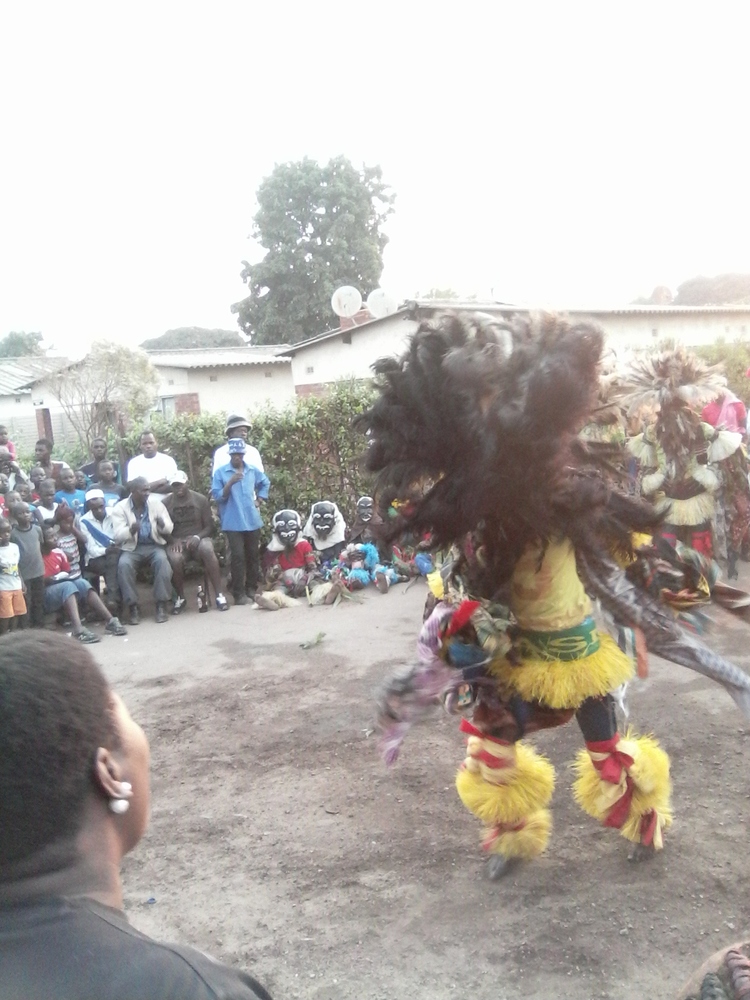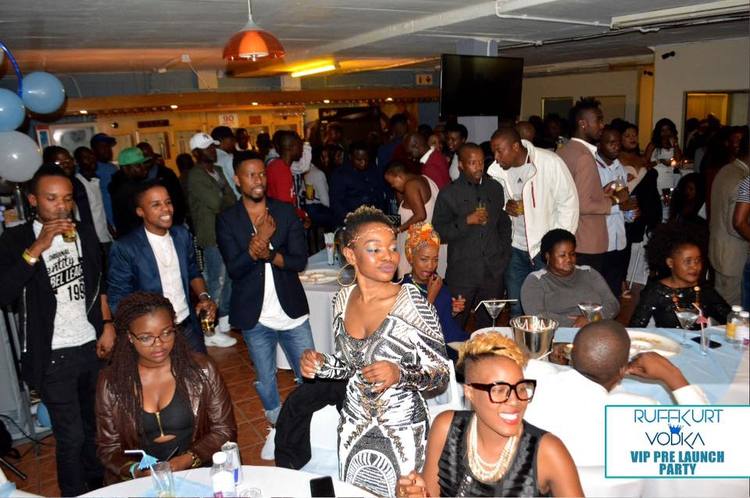The many faces of Nyau/Gule


Nyau dancers, donning their masquerade costumes, draw large crowds during their performances mostly in high-density suburbs and mining communities
Sydney Kawadza Senior Features Writer
Traditional dancers known as Nyau/Gule are associated with myth, mysticism and mystery. Tales told from experience, perceived or real, make the nyau/gule dancers furtive while the enigmatic dancers can be scary to the faint-hearted.
In Mutorashanga, people recall “Masiye”, a mystical dancer whose act always included up to five snakes. Chrispen Mhlaba recollects: “In the late 1980s and early 1990s, Masiye was a drawcard. He always had a sack full of snakes.”
The dancer would perform with the snakes.
“One day, a snake, a viper he had draped around his neck fell to the ground and bit him when he tried to pick it up,” Mhlaba said.
Masiye, however, survived the attack after being rushed to hospital and was never again seen dancing with a snake. Others like “aChimpepo” and “aChibhemba” were also known doyens of juju among Nyau leaders. At Alaska Mine in Chinhoyi, there was Ding Dong, famous for having a huge stone broken on his chest with five-pound hammers. Unfortunately, at the “dead” mining centre, most of these dancers did not live beyond 1995, dying mysteriously except for two of their leaders.
“The rumour had it that an old man, who was one of the elders, confessed to killing them for various reasons including good dancing skills and disrespect,” a resident said.
One of the dancers survived for years loaning out the various drums left by the group. Despite these seemingly petrifying tales, dancers such as the Chimombe-mombe, Makanje and others who can perform while standing on grass have left many spectators in awe. People would not dare play around such scary “creatures”.
WATCH VIDEO BELOW
The Kamwimwi dancers usually left people scurrying for cover when they were unleashed onto an area. But that is all in the past as the Nyau/Gule dancers gain popularity, winning various dancing competitions such as the Chibuku Neshamwari Dance Festival.
Drawing large crowds in Mabvuku, Dzivaresekwa, Mufakose, kwaMujo in Hatcliffe, Mbare, Budiriro and other suburbs, or farming and mining coummunities where the dancers are a weekend special, the mysticism seems to be dying as their popularity rises.
Instead of running away, people rush to the dancers for selfies. One winces when the Makanje seems to be at risk of being tripped by the marauding “fans”. People seem not to be scared anymore, not least in areas like Mufakose and Budiriro where dancers reportedly beat up people.
In some areas, spectators get into the thick of things imitating the once scary dancers. Is this the end of the mystery and myth? National Dance Organisation of Gule and Allies president Mr Kennedy Kachuluka dismissed this belief in an interview recently. He said Nyau dances fit into multiple occasions and people would mistake the occasions but the mysticism remains.
“Ours is a traditional dance and of the culture of the aNgoni and aChewa people of Malawi and Mozambique but spread to the aNsenga people of Zambia.
“It is a secret dance culture which is both spiritual and ceremonial.
“It’s our identity and way of living, which we cannot do away with. It’s rooted in our cultural origins and we also use it for various activities including summoning the spirits of our ancestors,” he said.

GOING BACK IN TIME … A Gule dancer , nicknamed aSimoni , depicts the colonization of Africans by whites
Mr Kachuruka said no one should take the dances as an act of evil. He berated people, including some religious leaders, for denigrating the culture and using their members for popularity gimmicks. Mr Kachuruka said there was nothing to fear from the dancers.
“The most important thing we have to note is that Gule is a spiritual and ceremonial dance. People have to be initiated through the chinamwari exercise.
“There are others who have befriended those of that cultural belonging and are no longer afraid of the dancers.”
There are three types of Gule dancers – Malawians, Mozambicans and Zambians.
“Zambian dancers are friendlier in comparison to those from Malawi and Mozambique. Even their appearance is different.
“The Zambians usually wear bright colours and their face paintings are also colourful and playful. They resemble circus dancers.”
He, however, said the Malawians and Mozambicans, usually draped in feathers, are scarier.
“Gule dancers from Malawi have a strict initiation programme at their chinamwali. Joining a Gule dancing group is different from joining a mbira group.
“It takes a lot to become a member. One has to go to the river, known as kuMadzi or kuMpanda, to learn about what is expected of him.”
During initiation, new members receive herbs and medicines to make them stronger. The herbs and medicines can get rid of any fears in one’s system. Recruits are also taught handiwork such as drum making. Mr Kachuruka dismissed associations with witchcraft and black magic.
“I agree we use traditional herbs and medicines. Some of the herbs are not even juju but the dancers themselves are a form of medicine.
“For instance, when a child suffers from panic streaks or convulsions and is held by a dancer, they can recover.
“The moment they give a huge sigh, they are cured, being held by the perceived scary animal with no harm cures the child.”
He said this explained why some mothers prefer this cheap method than being charged by traditional healers. The herbs and medicines used by the dancers, he said, can be more helpful than harmful.
“It’s not true that dancers chase and beat up people. Because it is now easy to access them some people may try their luck and provoke the Nyau through different ways like throwing stones.
“After provoking them, there is a chance that the leaders may pursue with the intention of finding out the reason behind the provocation.”
He said if a person who provokes the dancers flees and gets injured they will sometimes have problems with the wound but not an innocent person.
“Sometimes people run away from Gule dancers after an encounter and it is understandable as the appearance is considered to be scary,” Mr Kachuruka said
Most people have encountered the Akampini, but they are just messengers, meaning no harm to anyone.
“They usually run around with sticks but they visit families to leave a message of either a funeral or memorial service. They go to the family to deliver a serious message.”
He said there was a lot of within the culture.
“When I joined, I was young. I was around 13 years of age; this is a privilege open to people who already belong to the culture. If you were not born into the culture you have to request to be considered after you reach the age of 18. The request will go through a vetting exercise and assessment of the person`s virtues, to see whether or not they will preserve our culture or make a mockery of it,” he said.
Nyau/Gule is believed to have started with women as they initiated each other into womanhood and men only adopted and took over the practice after admiring the initiation of women. There are two different dances – afternoon and night performances. The dancers include the chirembwa or nyau mkwala, derogatorily called chimombe-mombe.
There are 10 categories in the night performances which are usually associated with very important occasions and ceremonies. There is the sajeni and medhemu, performers who dance away from the crowds then gurigufe or butterfly, nona (crocodile or tortoise), the nyau yolemba and chirembwa which is the wild goat then the amukoko and amundondo.
There is also the amabhazi dance that depicts buses or commuter omnibuses and mpfiti, the witch and the mystic apumambire, the mysterious dancer even feared by dogs. The dancers are smeared in goat blood and dance from midnight to 2am.
The apumambire is usually joined by other scary dancers known as nyata, which runs around with a bow and arrow, and has red eyes and exposed white teeth. Afternoon dancers are the common Nyau seen at public functions and retain their mystic and intrigue.
The akapori or kasanju are usually draped in feather masks and are known as the owners of the ground and they perform the opening dances. They are followed by the nyoronyo or akachipapa dancers with white masks depicting wise men, the aMaria women dancers are associated with Mary, Jesus’ mother or people’s mother.
The aSimoni, adopted from Simon, wear red masks depicting the coming of the white man on African soil, the aChanzunda, black faced, and gaga or guremutenede, the cow-faced dancers follow respectively.
These are followed by the pedegu, the alligator-faced dancers while the kakaka close the afternoon performances. The Gule/Nyau dancers are accompanied by heavy thumping sound of drums. The aChewa and aNgoni people use six drums, namely mpanje or kanenge, gunda we mun’ono, gunda mukulu and the mtuvisa also known as mtema or mbarure.
The aNsenga of Zambia use four drums, namely the gapa, gunda mukulu, gunda mun’ono and mbarure, which is usually accompanied by a whistle also known in Nsenga language as weziro. The dancers are usually led by someone with shakers or rattles, also known as siramba, which is like the remote control leading the way for the dancers.
Nyau dancers are seemingly attracted to women who sing the songs and are also known as man’ombe who are not strictly members but support the dancers. However, within the singers are the nyamukungwi who have been initiated as gule dancers together with their male counterparts.
Songs also have meaning depending on the occasions. Men and women who have been initiated are equal when they are together and can dress up in the same room.
Feedback: [email protected]











Comments